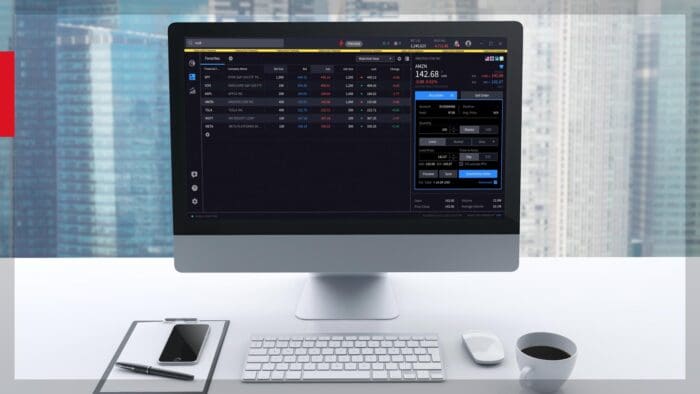The Interactive Brokers Mutual Fund/ETF Replicator finds an ETF(s) or Mutual Fund(s) whose performance parallels that of a user-specified Mutual Fund but whose fees are generally lower.
How do I access the IBKR Mutual Fund/ETF Replicator?
In Mosaic the IBKR Mutual Fund/ETF Replicator is in the New Window Area. The investor can click on the New Window button at the top left-hand corner of the screen, scroll down to More Advanced Tools and select Mutual Fund/ETF Replicator.
How do I enter a Symbol into the IBKR Mutual Fund/ETF Replicator?
Once the Replicator screen is up the investor can enter a mutual funds symbol, in the upper left-hand corner or click the “Browse Mutual Funds” link to bring up a list of Mutual Fund Families. The investor can select the family, then choose which fund to use. The investor can also choose whether to consider the liquidity of the ETFs in the search results.
Once a fund is selected the results will be displayed underneath. Prior to looking at them investors can change the investable amount and see the results update. They will also see the fund family, size, industry, front load, deferred load, and redemption charge if applicable.
How do I read the ETF display in the IBKR Mutual Fund Replicator?
Once a fund is selected the IBKR Mutual Fund Replicator will display a highly correlated single ETF symbol and or a possibly a highly correlated compound ETF if the performance exceeds the single ETF. A single ETF will display a 100% distribution while the compound ETF panel will show you how the investment amount is allocated to each ETF. The investor will also see the share count, full name, size, type, and the ETF tear sheet.
What data is available in the Performance Analysis section of the IBKR Mutual Fund/ ETF Replicator?
Directly below the ETF display is the Performance Analysis section. In this section the investor can see the performance comparison between the mutual fund and the ETFs for eight categories:
- VALUE — The value of 100 shares of the Mutual Fund and the comparable quantity of the ETF.
- 1YEAR PERF — The one-year performance of both the Mutual Fund and the comparable quantity of the ETF.
- YIELD — The one-year dividend yield of both the Mutual Fund and the comparable quantity of the ETF.
- ANNUAL EXPENSE RATIO — The estimated annual expenses for both the Mutual Fund and the ETF.
- FEE DIFF — The estimated management fee difference between the Mutual Fund and the ETF.
- CORRELATION — How closely the daily return of the comparable ETF correlates to the Mutual Fund.
- TRACK ERR — Tracking error is computed by comparing the daily return of the Mutual Fund and ETF over the period of the last year.
- And the SHARPE RATIO or Measure of excess return (risk premium) per unit of deviation.
Investors should note that the one-year performance and correlation values are calculated before expenses.
What does the Return Comparison chart section of the IBKR Mutual Fund/ ETF Replicator show?
At the bottom of the IBKR Mutual Fund/ETF Replicator is a graphic comparison of the Mutual Fund to the ETFs of the rate of return after expenses over a one-year period. The investor can mouseover the chart to see the date and return for that period. If a “D” is displayed the investor can mouseover to see the cash dividend amount and ex-dividend date.
Conclusion
The IBKR Mutual Fund ETF replicator is a valuable tool for investors looking to compare Mutual Funds with comparable ETFs that have lower management fees and trade throughout the day. Investors should note that the projections or other information generated by the Mutual Fund /ETF Replicator regarding the likelihood of various investment outcomes are hypothetical in nature, do not reflect actual investment results and are not guarantees of future results. Please note that results may vary with use of the tool over time.













Join The Conversation
For specific platform feedback and suggestions, please submit it directly to our team using these instructions.
If you have an account-specific question or concern, please reach out to Client Services.
We encourage you to look through our FAQs before posting. Your question may already be covered!